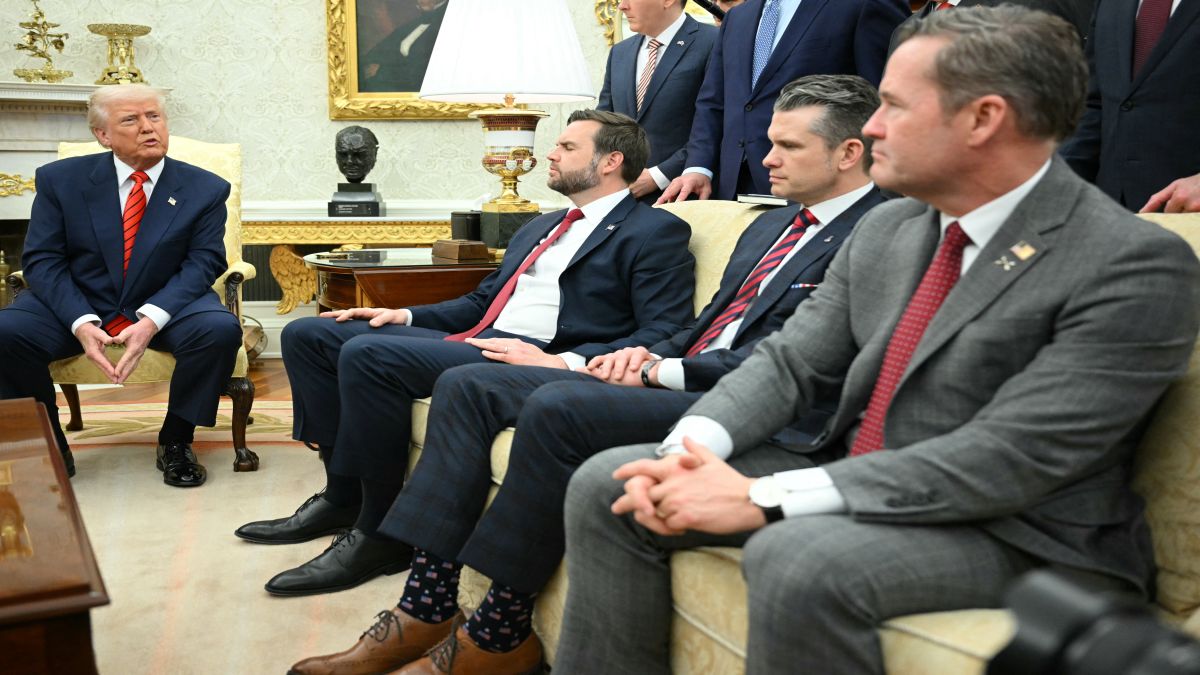The Atlantic magazine, whose journalist was mistakenly added to a group chat of Trump’s top officials, released on Wednesday the full text of the conversations that occurred on the Signal app, laying out plans for an imminent attack on Yemen.
The stunning details, including the times of strikes and types of planes being used, were all laid out in screenshots of the chat, which the officials had conducted on a commercial Signal messaging app, rather than a secure government platform.
Initially, the magazine had only shared a broad outline of the conversation between Secretary of Defence Pete Hegseth, National Security Advisor Mike Waltz, Vice President JD Vance and others.
The scandal has rocked President Donald Trump’s administration, which for now is reacting defiantly – attacking The Atlantic and denying any wrongdoing.
Why did The Atlantic publish the chats now?
The US magazine, whose editor-in-chief, Jeffrey Goldberg, was inadvertently added to the group chat titled ‘Houthi PC Small Group’, said that it decided to go public with the full text of the conversation after the US administration repeatedly denied the information shared on the chat being classified.
“As a general rule, we do not publish information about military operations if that information could possibly jeopardize the lives of U.S. personnel. That is why we chose to characterize the nature of the information being shared, not specific details about the attacks,” the magazine said.
It added, “There is a clear public interest in disclosing the sort of information that Trump advisers included in nonsecure communications channels, especially because senior administration figures are attempting to downplay the significance of the messages that were shared.”
Impact Shorts
More ShortsWhat does the group chat show?
Goldberg said Defense Secretary Pete Hegseth sent information in the Signal chat – also including Vice President JD Vance and Central Intelligence Agency Director John Ratcliffe – right ahead of strikes against the Huthi rebels on March 15.
For reasons unknown, Goldberg’s phone number had been added to the group.
Goldberg also revealed disparaging comments by the top US officials about European allies during their chat.
The texting was done barely half an hour before the first US warplanes took off and two hours before the first target, described as “Target Terrorist,” was expected to be bombed.
The details are shockingly precise for the kind of operation that the public usually only learns about later – and in vaguer terms.
“1410: More F-18s LAUNCH (2nd strike package),” Hegseth writes at one stage.
“1415: Strike Drones on Target (THIS IS WHEN THE FIRST BOMBS WILL DEFINITELY DROP, pending earlier ‘Trigger Based’ targets).”
A short time later, Trump’s National Security Advisor Mike Waltz, sent real-time intelligence on the aftermath of an attack, writing “Building collapsed. Had multiple positive ID” and “amazing job.”
White House reacts
Meanwhile, the White House has dismissed The Atlantic’s leak as a “hoax”. The magazine mentioned in its report that it had emailed White House Press Secretary Karoline Leavitt on Tuesday to know whether the administration would object if the publication released the chats.
In her reply, Leavitt said, “As we have repeatedly stated, there was no classified information transmitted in the group chat. However, as the CIA Director and National Security Advisor have both expressed today, that does not mean we encourage the release of the conversation. This was intended to be an [sic] internal and private deliberation amongst high-level senior staff and sensitive information was discussed. So for those reason [sic] — yes, we object to the release.”
Vance said that the magazine “oversold” the US attack story.
With inputs from AFP


)

)
)
)
)
)
)
)
)



